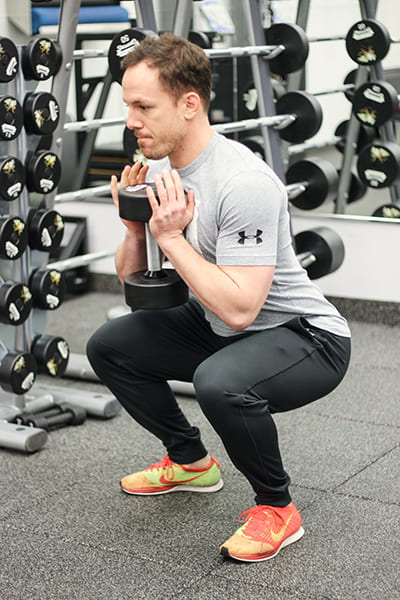Why are the hips so important? Before we answer that question, let’s start with some basic anatomy. There are 20 muscles surrounding the hip broken up in to groups based on function. The four groups consist of the flexors located anteriorly (front), the abductors located laterally (side), extensors on the posterior (back) side and finally, the adductors located medially (middle).
to groups based on function. The four groups consist of the flexors located anteriorly (front), the abductors located laterally (side), extensors on the posterior (back) side and finally, the adductors located medially (middle).
What do they Do?
The anterior group flexes the hip and helps stabilize the spine. Movements such as sitting up, kicking a ball, and lifting the knee up to walk, jog or run all involve contraction of the anterior muscle group.
The posterior muscle group is made up of the gluteus maximus muscle and the hamstrings group. Climbing stairs, standing, walking, and running are all activities that require strong contractions from the posterior muscle group to extend the leg.
The adductor muscle group, also known as the groin muscles, is located on the medial side of the thigh. These muscles move the thigh toward the body’s midline – think bringing the knees together.
The abductor muscle group is located on the lateral side of the thigh and moves the thigh away from the body’s midline. Think lifting the leg laterally.
Hips can be a real pain in the back!
Low back pain affects a large portion of the population, up to 85% of working people can expect to experience low back pain during their lifetime[1]. And the problem could be your hips.
Low back pain can radiate or be felt through the hips and down the side of one leg, this may be a symptom of sciatica. A common result of sciatica is inflammation, numbness or pain in one leg. Seeking help from a doctor, physio/athletic therapist can help alleviate the pain and strengthen the surrounding areas to improve your lifestyle. “People with troubled backs use their backs more. Generally, they walk, sit, stand and lift using mechanics that increase back loads. Many of them have stronger backs but are less endurable than matched asymptomatic controls. They tend to have more motion in their backs and less motion and load in their hips. A common aberrant motor pattern is known as gluteal amnesia[2].”
Assessing and treating the source of pain can have undesired results, a good therapist will look at your issue from a joint by joint approach. Looking at the joint/muscle above and below the affected area can produce better results.
In the case of low back or knee pain the hips (glutes/hamstrings/hip flexors) may be the culprit. DO NOT pick isolation exercises that only work a single muscle like hamstring curls, instead DO deadlift or squat variations that require the surrounding muscle groups of the hips, trunk and arms to work together to lift a heavy weight. Isolative hamstring curls can produce a dominance or reliance on that muscle group to perform as a primary mover, for example extending the hip during running or walking gait, when it is the secondary hip extensor to the gluteal muscle group. A result of this imbalance of function, an acute or a chronic buildup over time may result in injury.
Here is a basic warm up/mobility workout that can help improve range of motion and mobility in the hips:
Static Stretches
- Pidgeon pose
- 3D hamstring stretch – 3 direction hamstring stretch. Place 1 leg up on a bench with the opposite stance leg and foot facing forward. Internally and externally rotate to get the adductor muscle group, medial and lateral parts of the hamstring.
- ½ Kneeling hip flexor stretch
- Lizard lunge or Spider-Man lunge
Hold each stretch for 15-30 seconds for 2-3 sets.
Mobility/Dynamic Warm Up
- Leg pendulum swings
- Knee raise to external rotations
- Hip Bridge
- Leg Lock/Single leg Bridge
- Plate Squats
Perform 8-10 repetitions of each exercise for 2-3 sets.
[1] Cassidy JD, Carroll LJ, Côté P., The Saskatchewan health and back pain survey. The prevalence of low back pain and related disability in Saskatchewan adults, Spine (Phila Pa 1976). 1998 Sep 1;23(17):1860-6
2 McGill, Stuart PhD “Designing Back Exercise: from Rehabilitation to Enhancing Performance” http://www.backfitpro.com/pdf/selecting_back_exercises.pdf Accessed June 15, 2017

